
SteamVR

Dive into the realm of immersive reality with SteamVR – a revolutionary runtime within the Steam client that propels your virtual reality experiences.
SteamVR Top Features
- Highly intuitive room setup for defining your play area
- Advanced device management system for routing tasks like firmware updates and audio setting customization
- In-app purchasing supported through the microtransactions API already in play within other Steam apps
- SteamVR Home redefines the launch pad for VR experiences, allowing users to connect with friends in diverse environments
- SteamVR Collectibles offers 3D items to players based on their game-play and ownership time
| Feature | Description |
|---|---|
| Overlay Applications Support | SteamVR promotes the creation of overlay applications to boost additional functionality |
| 360-degree VR Experience | It serves up a comprehensive, full-room VR experience from every angle |
SteamVR Limitations
- Compatibility issues between SteamVR and Meta Quest 3 using air link have been recently reported
- Requires a relatively high system performance for optimal operation
SteamVR Use Cases
Use case 1: Gaming
Ride into the thrilling world of VR gaming with SteamVR! With its expansive 360-degree environment and comprehensive support for accessories like base stations and controllers, it promises a gaming experience like none other.
Use case 2: 3D Environment Creation
SteamVR’s software enables the creation of captivating 3D environments right on your PC. Ideal for artists, designers, and enthusiasts looking to unleash their creativity in virtual space!
Use case 3: Training Simulations
With its sophisticated room setup features and full-room VR capabilities, SteamVR is perfect for delivering realistic training simulations where space and environment play key roles.
Oculus
Behold the prominence of Oculus, a trailblazer in the realms of virtual reality. Spearheaded by Palmer Luckey, Oculus is a purveyor of the famed Oculus Rift, a VR headset line that breathed new life into the VR industry.
Oculus Top Features
- The first VR headset that provided a realistic experience at an accessible price.
- Built with novel tech, improving quality while curtailing costs.
- Offers a Screen Door effect which makes individual pixels significantly less noticeable.
- Sporting a resolution of 1280×800 total, effectively 640×800 per eye, the immersion felt is unparalleled.
- Boasts of a Field of View (FOV) more than 90 degrees horizontal, double the FOV of previous VR devices.
| Development Milestone | Year |
|---|---|
| Rift DK1 Released | 2013 |
| Updated prototype “Crystal Cove” Unveiled | 2014 |
| Oculus Rift CV1 Release | 2016 |
Oculus Limitations
- Oculus Rift S, that replaced the CV1, was discontinued in 2021.
- The discontinuation ended the Oculus Rift line, leading to possible lack of hardware support.
Oculus Use Cases
Use case 1
The Oculus platform, with its immersive VR experience, serves as a compelling medium for interactive gaming. With a large stereoscopic field-of-view, it fills each engagement with an extraordinary sense of depth and realism.
Use case 2
In the realm of education and training, Oculus devices offer the potential to simulate real-world environments, granting learners the chance to practice skills and explore new concepts in a safe, realistic setting.
Use case 3
Oculus devices also find utility in the healthcare industry, allowing for immersive patient therapy and rehabilitation, achieving remarkable strides in medical treatment and recovery.
Meta
When we delve into the realm of Virtual Reality (VR) tools, Meta Platforms Inc., formerly known to the world as Facebook Inc., ascends as a titan of technology. An illustrious conglomerate residing in Menlo Park, California, Meta emblazons its mark not just across the Americas, but also in Europe, Middle East, Africa, and Asia-Pacific. Meta stands stridently among the Big Five American IT firms, crafting a sophisticated tapestry of products and services tethered to the paradigm-shifting metaverse.
Meta Top Features
- The cornerstone of Meta’s prodigious offerings, Facebook, leverages the power of social media to connect billions and breed a globalized network.
- Oculus VR transmutes fictitious landscapes into living, sensory experiences.
- Messenger and WhatsApp tether people in instantaneous, dynamic dialogue.
- In a bid to transcend the boundaries of reality itself, its Reality Labs subsidiary and Horizon Worlds immerse users in alternative realms.
- The Presence Platform for the Quest 2, elevating mixed reality experiences by harnessing unprecedented tools.
| Product | Untapped Potential |
|---|---|
| Mapillary | Unleashing crowd-sourced street-level imagery for mapping the metaverse. |
| Workplace | Unifying teams in a shared digital environment, redefining corporate collaboration. |
| Ray-Ban Stories | Facilitating augmented reality through smart eyewear, reframing perspectives on the world. |
Meta Downsides
- Even a behemoth like Meta is not immune to controversy, with past incidents related to data rights violations and the Cambridge Analytica episode.
- Intense scrutiny following 2021 rebranding, with decline in profits.
- Dependency on advertisement revenues, leaving it susceptible to market volatility.
Meta Use Cases
Use case 1: Social Connectivity
For the lay user, Meta’s offerings like Facebook, Messenger and WhatsApp serve as the conduit for social connectivity, binding friends, families, and communities.
Use case 2: Business Collaborative Tools
For corporations, its entity as ‘Workplace’ fosters internal cohesion, reflecting how collective strength can be multiplied within a digital framework.
Use case 3: Tech Innovation and Future of Entertainment
To visionaries of the tech world and pioneers in entertainment, Meta’s endeavors in VR, and its vision for the metaverse herald the dawn of new digital frontiers.
Quest
Embarking on a journey towards broadening the horizons of immersive experiences, Quest is a standalone VR headset, designed by Oculus, a part of Facebook’s Meta. Launched on May 21, 2019, to endorse the mainstream appeal of VR, Quest has been successful in promoting digital diversity in gaming and beyond.
Quest Top Features
- Standalone design – No restrictive cables or external devices needed.
- Availability of dual hand controllers and four wide-angle tracking cameras for smooth and hassle-free gaming.
- Offers two different storage variants of 64GB and 128GB with a Qualcomm Snapdragon 835 mobile chipset.
- Impressive battery life of 2-3 hours at high resolutions of 1600 x 1440 pixels per eye.
- Can remember up to five spaces and automatically switch between them.
- Features hand-tracking and high refresh rate of 120 Hz for supported games.
- Attractive library of over 500 VR games and experiences.
| Key Feature | Benefit |
|---|---|
| USB-C charging port | Provides easy and fast charging. |
| Wireless design | Grants the freedom to move and play anywhere. |
| Model with 256 GB | Added storage for more game download capacity. |
Quest Disadvantages
- Limited battery life may interrupt extended gaming sessions.
- Uses an older Qualcomm Snapdragon 835 mobile chipset, which might not provide the most efficient performance for high-graphic VR experiences.
- Optional accessory cable for PC tethering to access more graphic-intensive VR experiences could be seen as an additional cost.
Quest Pricing
Quest’s pricing policies have been crafted to ensure cost-effective accessibility. It was released at a price of $399. A higher storage variant is available for an additional cost, and the upcoming Quest 3 is priced at $499.99 for the 128GB variant.
Quest Use Cases
Use Case 1: Gaming
With its powerful Snapdragon chipset and high-resolution viewing capabilities, Quest is a perfect companion for passionate gamers providing immersive gameplay.
Use Case 2: VR Experiences
Quest offers access to dozens of compelling VR experiences, making it a gateway to virtual realities for VR aficionados.
Use Case 3: Spatial Understanding
The innovative machine learning capabilities of the Quest provides an elevated understanding of spaces, serving as an egalitarian tech tool for designers, architects and students alike.
PSVR
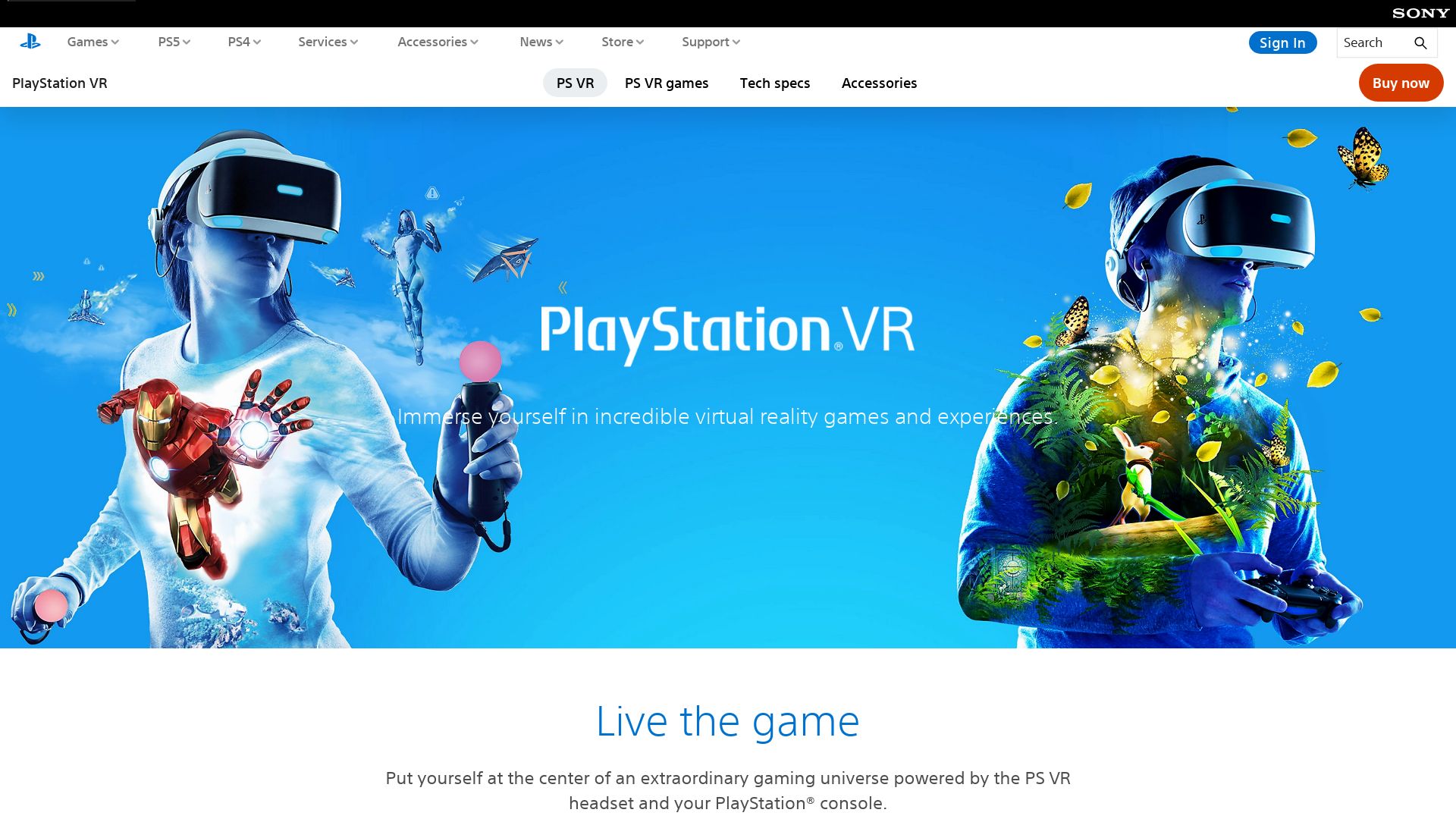
Ride the wave of virtual reality with PSVR – Sony Interactive Entertainment’s killer gaming tool, once shadowed as Project Morpheus. Boasting an impressive historical trajectory dating back to the 1990s, it is now into its eighth-generation console gaming with PlayStation 4 and PlayStation 5.
PSVR Top Features
- Immersive Gameplay: Thanks to its 5.7-inch OLED panel, 1080p display resolution, and 960 x 1080 pixels resolution per eye, PSVR is a visual spectacle.
- Modes of Gaming: Switch between native 90 Hz, native 120 Hz, and interpolated 120 Hz modes for diverse gameplay experiences.
- Controller Options: Lesbian from Jade a regular PS4 controller, PlayStation Move controllers, to PlayStation VR Aim controller; choice is yours.
- High Compatibility: You can plug it into your TV for others to access your gaming view or another image. It is compatible with PS4, PS4 Slim, PS4 Pro, and PS5.
| Sold Units | Over 5 million units globally as of 31 Dec 2019, |
| Weight | At 600 grams, it delivers a light yet sturdy gaming experience. |
| Head-Tracking | Features 100-degree FOV, 6DOF head-tracking, and stereoscopic 3D. |
PSVR Limitations
- Additional Equipment: Requires PlayStation Camera peripheral for head tracking, LED tracking, and VR functionality.
- Price: At $399 in the US and similar prices worldwide, it may not be every gamer’s cup of tea.
PSVR Pricing
Own a PSVR for $399 in the US, €399 in Europe, £349 in the UK, ¥44,980 in Japan, A$549 in Australia, and SGD$599 in Singapore. Pricing varies depending on the region.
PSVR Use Cases
Use case 1
Experience the ultimate PSVR gameplay with titles like MechWarrior 2, Monster Escape, and Keep Talking and Nobody Explodes.
Use case 2
Enjoy non-VR games viewing on a simulated projection screen in 3D space thanks to the Cinematic Mode.
Use case 3
Step into an all-rounded entertainment system with PSVR. Watch 360-degree photos and videos, 3D movies on Blu-Ray 3D, Share Play, and Live from PlayStation.
PSVR 2
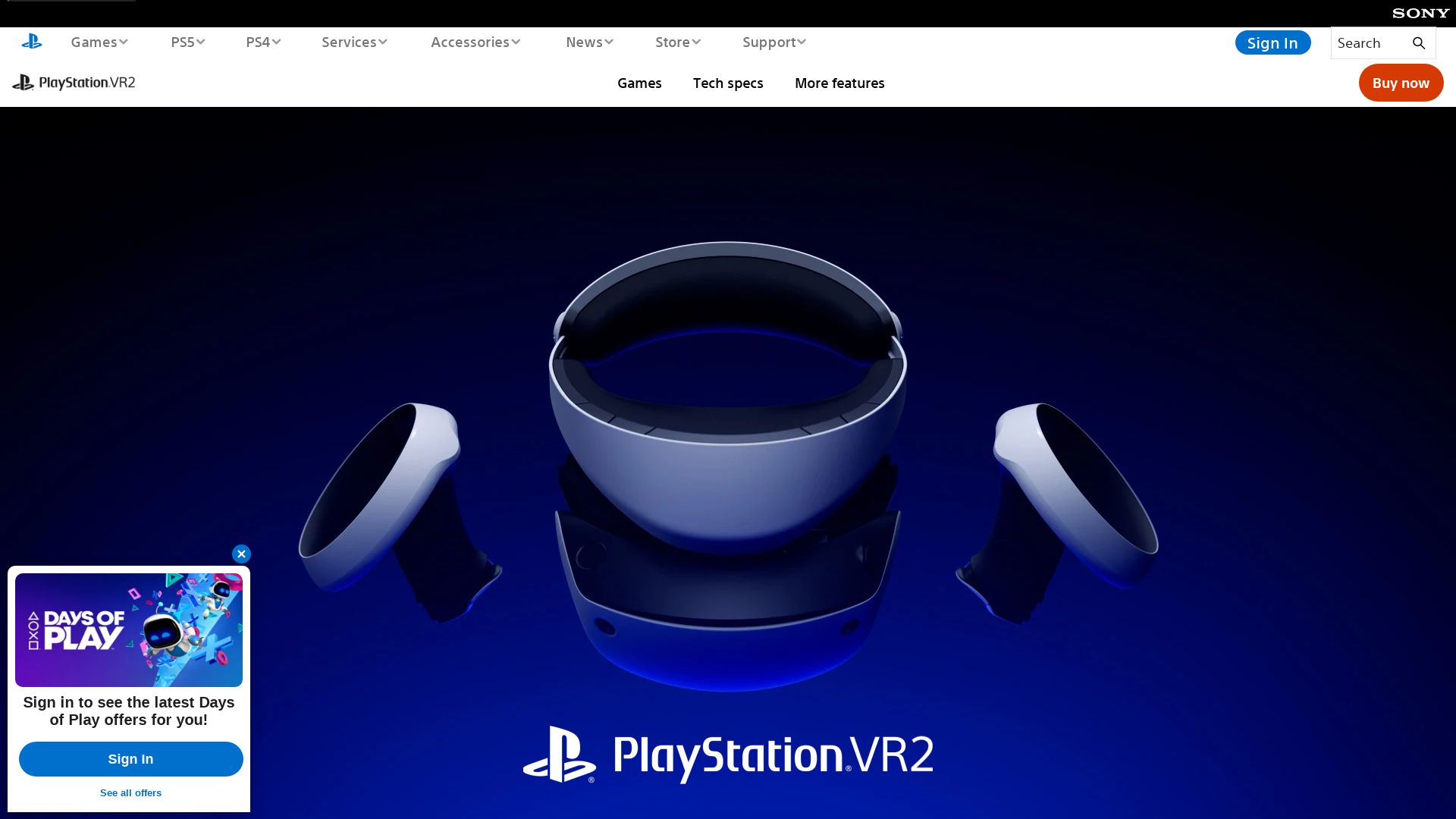
Dive into the enhanced experience of PSVR 2, a high-performance VR headset, an upgrade to the original PSVR, boasting notable improvements. However, bear in mind the prerequisite of a PlayStation 5.
PSVR 2 Top Features
- Direct plug-in into PlayStation 5, omitting the need for an external camera and processor boxes.
- Large upgrade from original PSVR’s 960 x 1,080-pixel displays to 2,000 x 2,040 in PSVR 2.
- Enhanced performance surpassing Meta Quest 2.
- Supports HDR for a vibrant, visually engaging display.
- Comfort-centric design with robust Sense controllers and adjustable lenses for individual comfort.
- Earbuds included to amplify immersion.
- Exclusive VR titles on offer with more promised in the future.
| Resolution | 2000 x 2040 per eye |
| Field of View | Approximately 110 Degrees |
| Refresh Rate | Up to 120Hz |
PSVR 2 Limitations
- Requires PlayStation 5, limiting its accessibility.
- High cost, more than the console itself.
- Limitation in game availability, with no backward compatibility with previous PSVR titles.
- Batteries deplete swiftly.
PSVR 2 Pricing
Expect high PSVR 2 costs, priced at $549.99/£529.99, surpassing the console itself, with additional expenditure for accessories such as the Sense Controller Charging Dock and Pulse Headset.
PSVR 2 Use Cases
Use Case 1
If you prioritize comfort and display quality in VR experience, PSVR 2 is an excellent choice. Its adjustable lenses and HDR support ensure personalized comfort and vivid imagery.
Use Case 2
For those focused on exclusive titles, despite the smaller pool offered compared to platforms like Steam or Meta, PSVR 2 promises exclusive VR content in future.
Use Case 3
Game developers seeking high performance and high-quality vision will find the substantial upgrades in performance and resolution offered by PSVR 2 very appealing.
Oculus VR
Oculus VR is a trailblazer in the arena of immersive technology. Founded by Palmer Luckey, it developed the acclaimed Rift VR headset. Post-acquisition by Facebook in 2014 in a deal worth $2B, it transitioned to become a key part of Meta, the entity that Facebook later rebranded to, with an expansive range of products under its belt, notably Meta Quest 2 and Meta Quest Pro VR headsets.
Oculus VR Top Features
- Meta Quest 2:An affordable yet high-performance VR headset.
- Partnership with Samsung: Brought the innovative Gear VR to the market in 2015.
- Unique Capabilities: Launched two distinctive headsets, Rift S and Quest in 2019.
| Product | Year of Launch | Notable Feature |
|---|---|---|
| Oculus Go | 2017 | An inexpensive, standalone headset |
| Rift S and Quest | 2019 | Unique capabilities |
| Meta Quest 2 | 2020 | Powerful and customizable |
Oculus VR Downsides
- Expensive R&D: Meta’s Reality Labs division reported a loss of $13.7B in 2020.
- Stiff Competition: The upcoming launch of Apple’s Vision Pro poses a credible threat to Oculus market share.
- Brand Dilution: The Oculus brand concluded with Meta’s rebranding in 2021.
Oculus VR Use Cases
Use case 1: Gaming
Oculus VR’s core strength lies evidently in gaming, providing an immersive, high-performance environment for gamers. The company’s focus on innovative design and performance make it a desirable choice among gamers.
Use case 2: Broader Experiences
Envisioned by Facebook’s Mark Zuckerberg to go beyond just gaming, Oculus VR has the potential to enable more diverse and broader experiences, expanding the reach and potential use cases for VR technology.
Use case 3: Virtual Reality Environments
With Meta’s hefty investment in the metaverse, Oculus VR products are essential tools for exploring and realizing the potential of a vast VR environment.
Vive
An entrant into the sophisticated VR world, Vive is an upscale VR headset, developed in collaboration by Valve and HTC, harnessing the power of external computers or game consoles.
Vive Top Features
- High-resolution 5K screens with a wide field of view at 120 degrees
- Designed for room-scale tracking, it can facilitate motion within a 15 x 15-foot room
- Exclusive HTC Vive content library, including acclaimed games like Half-Life: Alyx and Beat Saber
- Comes with motion controllers enhancing the gaming experience
| Product | Special Characteristics |
|---|---|
| HTC Vive Pro 2 | Featuring the highest resolution screen and can be paired with Valve Index Controllers for optimum experience |
| Valve Index Controllers | Better comfort and accurate tracking than conventional wand-style controllers |
| Vive Pro 2 headset + Valve Index Controllers | Perfect combo for gamers seeking advanced specs |
Vive Limitations
- Requires a VR-ready, high-end PC for optimum experience
- Traditional gamepads not included
- On-ear headphones can be replaced with USB-C headphones for better sound quality
Vive Pricing
The estimated pre-launch price for Vive is around $799, with the VR-ready PC for optimum experience costing an additional $1,000 or so.
Vive Use Cases
Use case 1: Gamers
Vive is an excellent choice for gamers with its room-scale tracking ability, motion controllers, and expansive content library with leading titles.
Use case 2: AR/VR Enthusiasts
If you are an AR/VR enthusiast, Vive offers you a high-end, interactive VR experience with its advanced features.
Use case 3: High spec seekers
For those requiring highest specs, pairing Vive Pro 2 headset with Valve Index Controllers provides maximum potential.
Windows Mixed Reality
A glimpse into the future of computing, Windows Mixed Reality seamlessly blends the physical and digital worlds, transcending traditional screen-bound experiences to offer interactive and immersive environments. Propelled by advancements in computer vision, graphic processing and a host of other technologies, it offers a unique platform for VR experiences.
Best Features of Windows Mixed Reality
- Immersion: Through holographic representations and mixed reality spectrum, it delivers a deeply engaging user experience.
- Compatibility: It works well with most laptops and PCs, extending its accessibility to a wider audience.
- Intuitive Controls: Mixed Reality controllers tracked by the headset remove the need for external sensors.
| Feature | Why it matters |
|---|---|
| Inside-out tracking technology | Allows for a wider range of VR experiences within MR. |
| Two main devices | Offers diverse experiences through Holographic and Immersive VR devices. |
| Front-mounted cameras in MR headsets | Enhances the virtual scene by recognizing room and objects. |
Limitations of Windows Mixed Reality
- Given the varied spectrum of MR, transitioning between augmented and virtual realities can sometimes be challenging for users.
- As MR technology evolves, there is a high learning curve for new users, which can impact user experience.
Use Cases for Windows Mixed Reality
Use case 1: Business
For businesses, Windows Mixed Reality can transform the way information and data are interacted with. By breaking free of screen-bound experiences, it allows for seamless collaboration on 3D assets in MR spaces.
Use case 2: Education
In the educational arena, Windows Mixed Reality can make complex concepts easier to grasp by providing an interactive three-dimensional teaching and learning environment.
Use case 3: Entertainment
From gaming to consuming media content, Windows Mixed Reality’s holographic and three-dimensional representations make for a more immersive and engaging entertainment experience for consumers.
OpenComposite
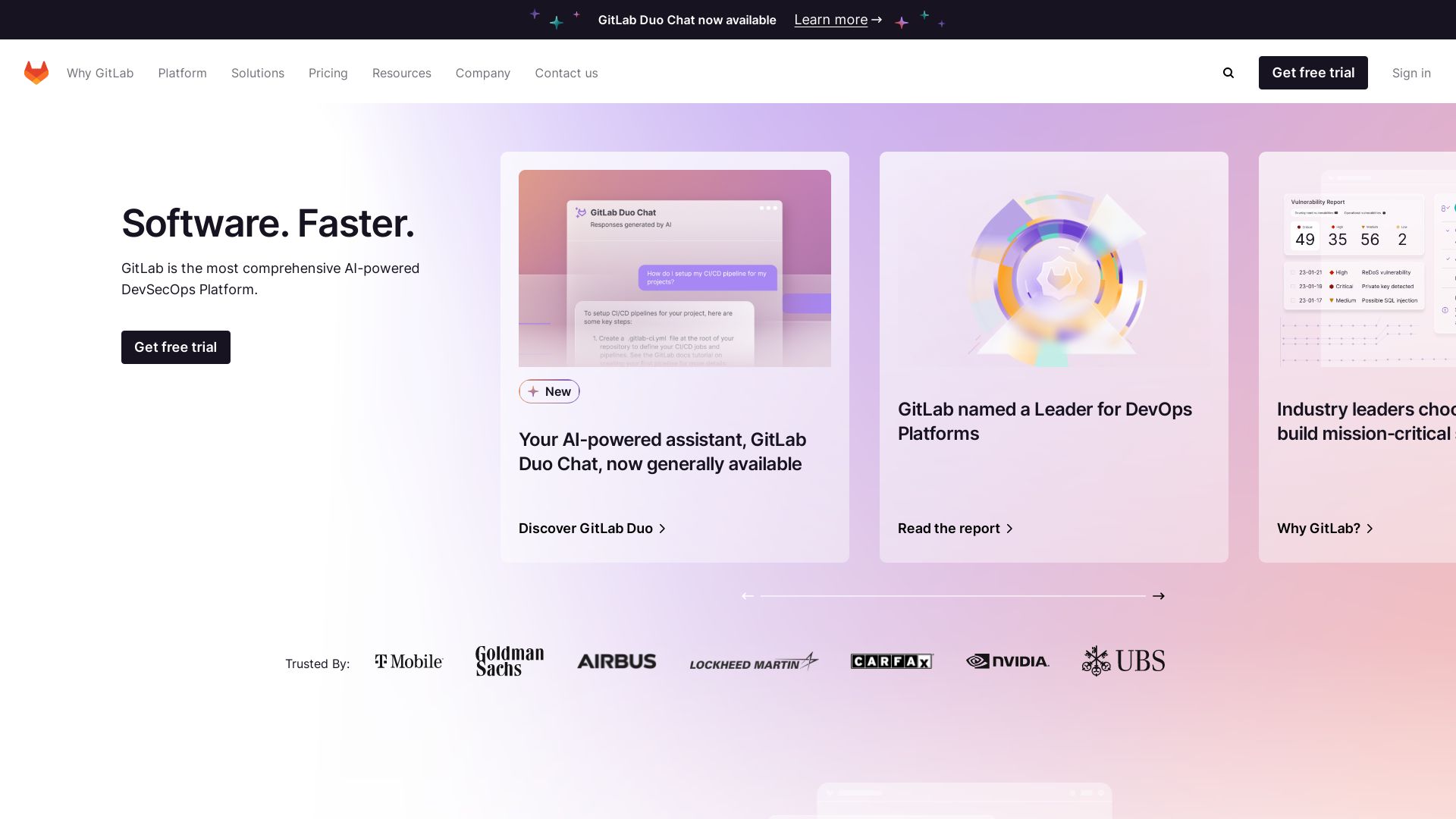
Functioning as an implementation of OpenXR, OpenComposite replaces the need for SteamVR to run existing OpenVR applications, in turn smoothing out performance issues and decreasing data consumption.
OpenComposite Top Features
- Improved Performance: By bypassing SteamVR, OpenComposite mitigates the frequent stuttering issues experienced with the former.
- Decreased Data Consumption: As compared to SteamVR, OpenComposite uses a significantly lower amount of data.
- Installation Flexibility: OpenComposite offers both system-wide and per-game installations, providing users with adaptability to their unique preferences.
- Compatibility: OpenComposite works well with various headsets, such as Windows Mixed Reality, Oculus, Varjo, HTC, and Pico.
- Bug Reporting: OpenComposite encourages users to report issues through GitLab or their Discord server.
| Feature | Description |
|---|---|
| Multiple OpenVR headers | Includes many OpenVR headers, operating under the MIT Licence. |
| Configuration | Offers various configuration options like renderCustomHands, handColour, supersampleRatio, and more. |
| Game Compatibility | Supports popular games like American Truck Simulator 2, Assetto Corsa, Dirt Rally 2, Elite Dangerous, etc. |
OpenComposite Disadvantages
- Does not yet support controller models rendering and virtual keyboard functionality.
- Limited game compatibility, primarily with popular games.
- Scripts heavily generate code, which limits repository size.
OpenComposite Pricing
OpenComposite follows the open-source model, which means users can access and make use of it at no cost.
OpenComposite Use Cases
Use case 1
For users struggling with performance issues in SteamVR, OpenComposite provides a way to experience smoother gameplay and application running.
Use case 2
If SteamVR proves to be too data-intensive for a user’s system, switching to OpenComposite can significantly reduce data usage.
Use case 3
For users trying out various headsets like Oculus, HTC, or Pico, OpenComposite offers widespread compatibility, increasing flexibility and choice.
OpenVR
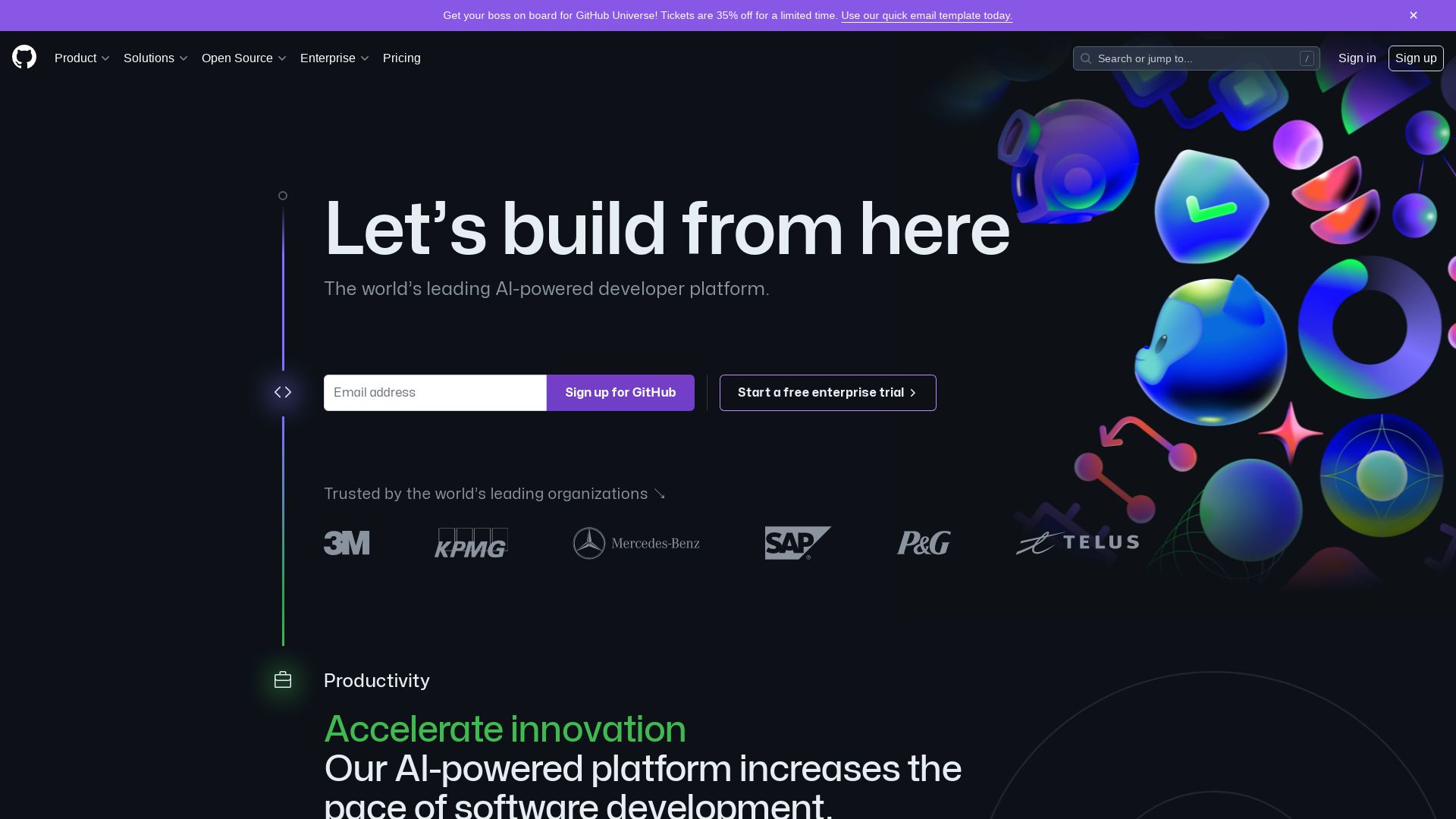
Envision your virtual reality dreams with OpenVR, an open-source SDK/API led by Valve. Catering to SteamVR and other VR headsets, OpenVR has established itself as a reliable conduit between VR hardware and software. It’s your ticket to designing compelling SteamVR games and software applications. Originally launched in April 2015, OpenVR is committed to fostering a greener digital era by inviting open collaboration on virtual reality projects.
OpenVR’s Best Features
- Multi-vendor support: Designed to function seamlessly with diverse VR devices including Oculus Rift and Windows MR, fostering a digitally sustainable ecosystem.
- Open-source: OpenVB espouses a digital green ethos by promoting sharing and collaboration – a nod towards sustainable innovation.
- Tracking and prediction features: With IVRChaperone recording tracking data and IVRSystem::ResetSeatedZeroPose facilitating tracking calls, OpenVB masters the dynamism of the virtual realm.
- Unity Plugin Support: OpenVR SDK offers native integration with Unity, ensuring smooth game and application development.
| OpenVR Class Reference | Encompasses a comprehensive range of constructors, fields, properties, and methods for advanced VR development. |
| Support on multiple Unity versions | Compatible with several Unity versions ensuring continuous development opportunities. |
| Modes and settings support | Accommodates numerous modes and settings such as k_pch_audio_OnRecordDevice_String, k_pch_Camera_EnableCameraForCollisionBounds_Bool, and more. |
OpenVR Limitations
- Complexity: Given its comprehensive feature load, OpenVR can seem overwhelming, especially for developers new to the VR scene.
- Dependency: Dependency on SteamVR hardware may restrict cross-platform adaptability.
OpenVR Pricing
OpenVR affirms the open-source ethos by offering its services at no charge. Dive into the exciting VR realm without worrying about costs. Remember, the only investment needed is a green tech commitment paired with creativity.
OpenVR Use Cases
Game Development
OpenVR empowers developers to create immersive gaming experiences for SteamVR, capitalizing on top-notch tracking features and Unity support.
Software Design
A vast array of VR applications can be designed using OpenVR’s robust features, from simulations to educational tech.
Immersive Storytelling
Developers and creatives can weave narratives in immersive VR— a captivating way to share valuable, sustainable messages.
Oculus Runtime

Unveiling the canvas of virtual reality, Oculus Runtime, a paragon of progress in the realm of VR. Catalyst for the shift from proprietary developer APIs to OpenXR, Oculus Runtime stands as a beacon of interoperability, driving standardization in VR/AR application development. Rightfully esteemed, it ushers in a new era, echoing the spirit of the future in every byte of its existence.
Oculus Runtime Top Features
- Adoption of OpenXR: Facilitating seamless interoperability, Oculus Runtime replaces Oculus Mobile and Oculus PC SDK.
- Support from others: Enjoying broad industry support, it ensures VR advancement is a collective stride.
- Developmental promise: Beyond August 2022, all fresh Oculus apps will be OpenXR built, rolling out a red carpet for innovation.
| Aspect | Details |
|---|---|
| Unity’s OpenXR Support | Currently in the experimental phase but full support expected by 2022 |
| Unreal Engine’s OpenXR Support | Prognosticated to coincide with Unreal Engine version 5 release in 2022. |
| Hardware Requirements | Intel Core i3-6100 or AMD FX 4350, GeForce GTX 960, two USB 3.0 ports and one USB 2.0 port, Windows 8 or newer |
Oculus Runtime Limitations
- Motion sickness: A reported general complaint
- Zenimax Lawsuit: Successfully sued for intellectual property violation, resulting in a fine of US$500 million
Oculus Runtime Use Cases
Use Case 1: Architecture Firms
A vital asset to visualization and design, Oculus Runtime is a tool for innovative design and immersive presentations.
Use Case 2: Automotive Configuration
Renowned companies like Audi harness the power of Oculus Runtime in their configuration practices, bringing precision and innovation together.
Use Case 3: Educational Institutions
Universities and schools employ Oculus Runtime, etching knowledge in virtual reality, the modern canvas of education.
Unity XR
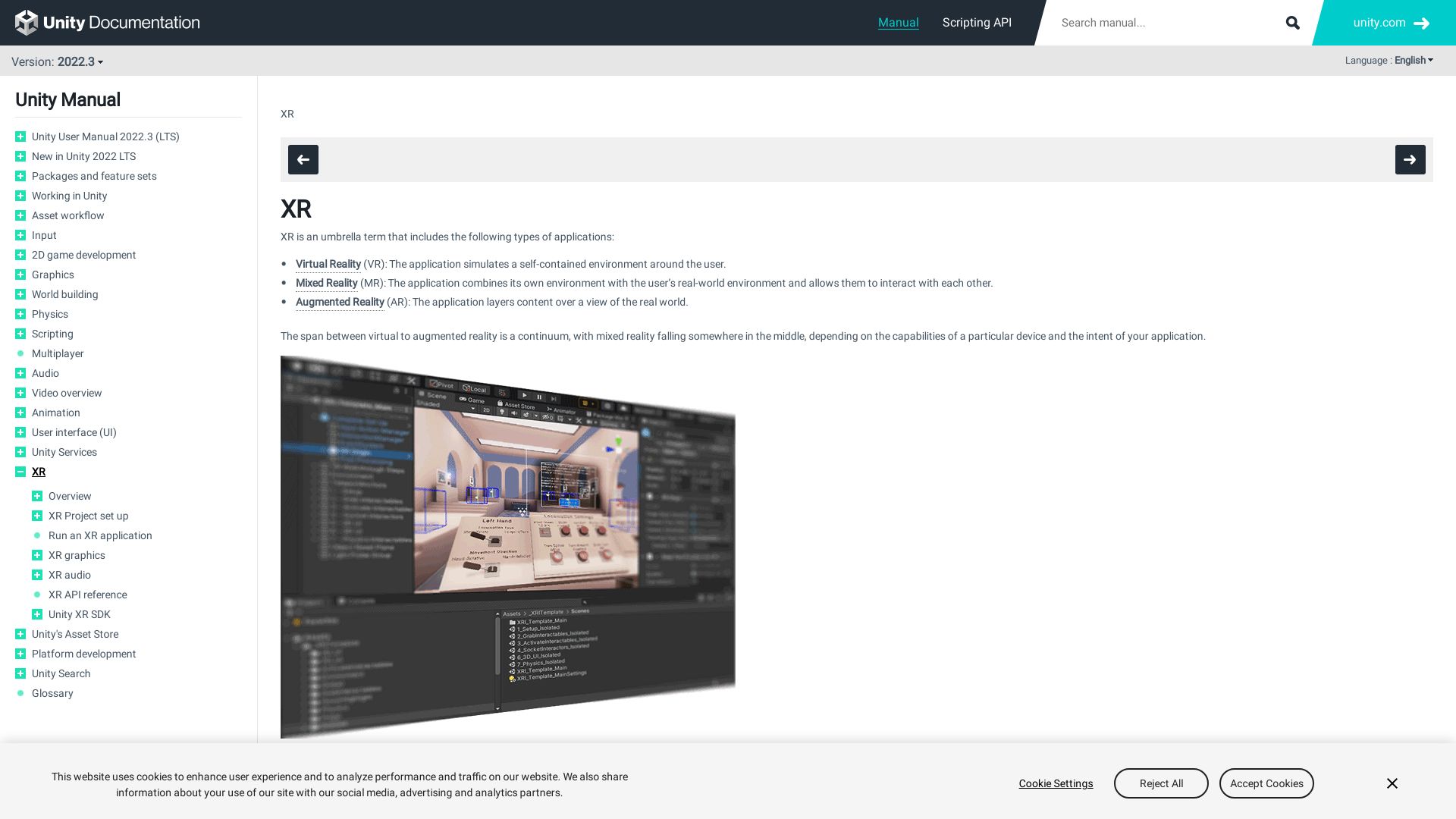
Enter the realm of Unity XR, a versatile tool that caters to the likes of virtual reality (VR), mixed reality (MR), and augmented reality (AR). Immerse in self-contained environments with VR, merge the virtual and the real with MR, and layer content over real-world views with AR. From game and app development to extensive support for headset and device makers, Unity XR is here to transform your creative visions into reality.
Unity XR Top Features
- Unified Plug-In Framework: Unity’s 2019.3 version introduces a unified plug-in framework for seamless cross-platform integration.
- XR Interaction Toolkit: Enables fast XR interaction development, no coding skills required.
- AR Foundation: Features AR gestures, object placements, UI interactions, and AR annotations.
- Upskilling Courses: Offers upskilling programs focused on individual learning and career objectives in XR development.
| Plugin | Description |
|---|---|
| XR Plugin Management | Allows the installation of essential plugins. |
| Universal RP (Render Pipeline) | Enhances the rendering performance of your projects. |
| XR Interaction Toolkit | Provides user interaction functionality for AR and VR experiences. |
Unity XR Limitations
- Requires knowledge of Unity’s interface and features for efficient utilization.
- No integrated support for spatial computing.
- AR interactions depend solely on AR Foundation.
Unity XR Use Cases
Use case 1: App and Game Development
Unity XR can be a game-changer for app developers and game designers. By utilizing its broad range of tools and plugins, developers can create immersive and interactive VR, MR and AR experiences.
Use case 2: Headset and Device Makers
Unity XR offers extensive support to headset and device manufacturers, allowing them to add hardware support to Unity. With this, they can ensure enhanced compatibility and performance for their users.
Use case 3: Upskilling Courses
Looking to upskill or venture into XR development? Unity XR has got you covered. Offering specialised courses, you can learn to create your own AR and VR experiences using industry tools. Build your XR project management skills and evaluate the technical feasibility of these projects.
Virtual Desktop
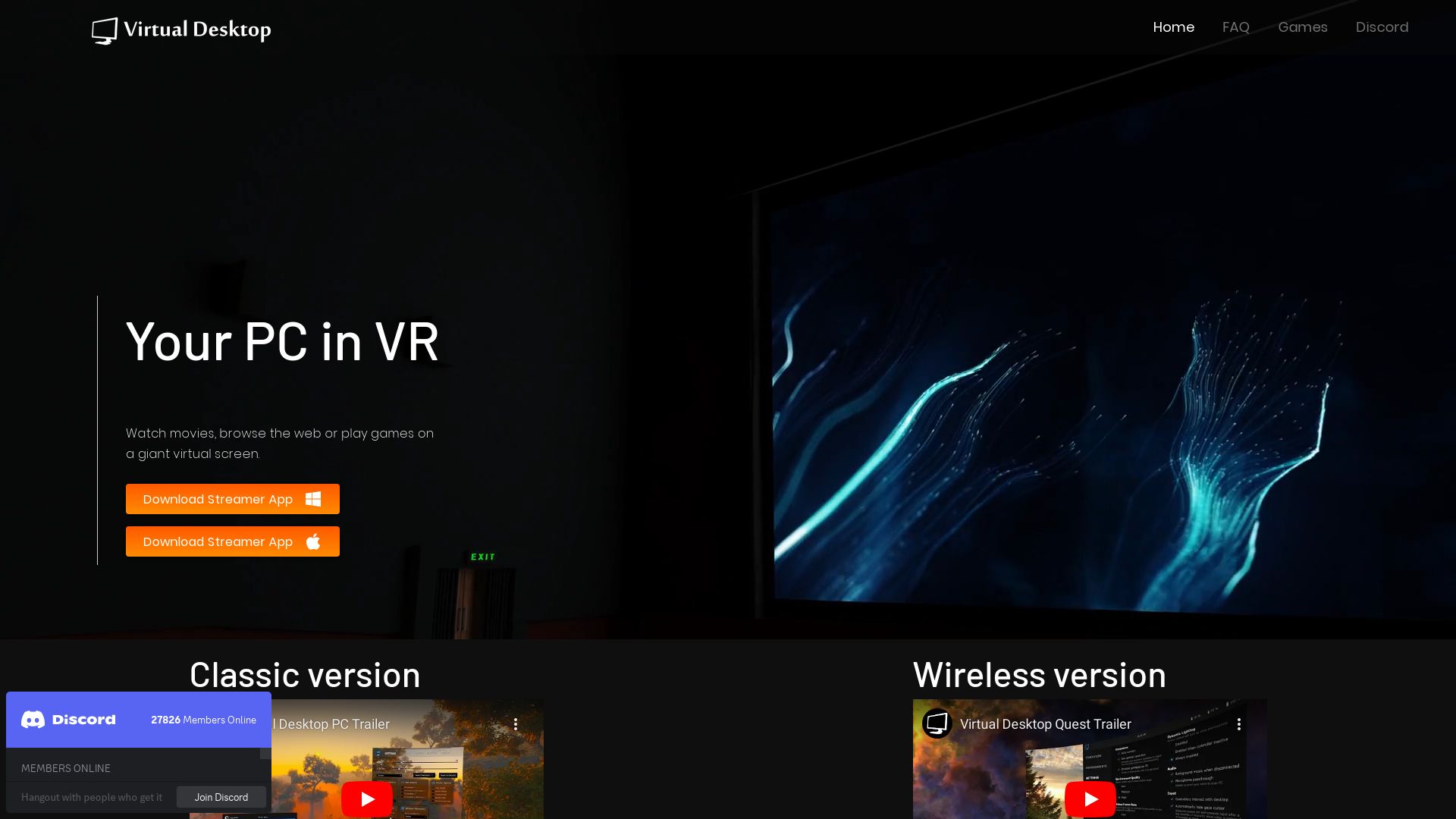
Step into a new era with Virtual Desktop. A resilient tool optimized for PC-run VR experiences; offering you seamless transition between your normal monitor and virtual environment, arming you with a secure streaming experience and enhanced productivity.
Virtual Desktop Top Features
- Compatibility: Adept with SteamVR, Oculus Rift and HTC Vive, catering applications as diverse as Microsoft Office to Netflix on your VR device. Components like the Streamer App, multi-monitor arrangement and infinite virtual workspace add to its firepower. Supports Bluetooth peripherals like keyboard and mouse for easy navigation.
- Quality: Superior latency optimization and natively developed streaming, with 3D SBS movie support.
- Versatility: Not just games. Slack, Adobe Suite, or even streaming websites; Virtual Desktop keeps your workspace wide and diverse.
- Collaboration: Takes it a step higher with associations with AWS and Meta to provide cloud-based virtual desktops and VR. Showcases the potential of future VR workspaces, with prototyping VR experiences.
- Security: Proudly presents a secure streaming experience, with foundational reliance on NICE DCV; a secure remote display protocol that ensures safe application and desktop delivery across platforms.
| Feature | Impact |
|---|---|
| Multi-screen arrangement | Transform your VR environment to an organized workspace. |
| Aesthetic design | User-friendly interface supplemented with easy navigation. |
| Supported peripherals | Bluetooth keyboards, mouse, and gamepads for seamless user interaction. |
Virtual Desktop Limitations
- Not free of purchase, with no ‘free-to-play’ option available.
- No support for Mac for gaming functionality.
- Compatibility issues with VPN software and certain antivirus systems.
- Minor difficulties in view perspective, like the main desktop seeming stretched out with a lower resolution.
Virtual Desktop Use Cases
Use case 1: Gaming
The seamless integration with SteamVR, Oculus and Toolbox for HTC Vive makes it a potent tool for Gamers.
Use case 2: Office Applications and Media
Compatibility with applications such as Microsoft Office, Adobe Suite and popular online streaming platforms realizes its potential for remote working and content consumption.
Use case 3: Prototyping
Collaboration with AWS and Meta demonstrates the future of workplace productivity in VR environments, boosting prototyping experiences.
PlayStation VR
Fostered in the labs of Sony Interactive Entertainment, PlayStation VR (PS VR) has articulated itself as a notable performer in the virtual realm since its inception in October 2016.
PlayStation VR Top Features
- Boasts a 5.7-inch OLED panel with a sharp 1080p display resolution.
- Distinctly designed processor box enables both social screen video output to TV and 3D audio effect processing.
- A massive selection of intriguing games that continue to receive regular updates.
- Employs 9 positional LEDs to track 360-degree head movement, enhancing immersion.
- Compatible with the DualShock 4 controller, PlayStation Move controllers, or the PlayStation VR Aim controller for diverse interaction methods.
| Feature | Benefit |
|---|---|
| Built-in Microphone | Facilitates online chat and strategizing in-game. |
| Two Display Versions | Specific display properties for PS4 and PS4 Pro versions cater to different user preferences. |
| Existing Technology Integration | Employs existing Move and Camera technology, providing convenience for existing PS tech users. |
PlayStation VR Limitations
- Difficulties in tracking with the PlayStation Camera when compared to the HTC Vive.
- Performance can be significantly impacted by room lighting conditions, optimally performing in a dim and no-direct-light environment.
- Makes a trade-off for additional processing power offered by PS4 Pro, enhancing texture detail, draw distances, and a slight graininess reduction for games supporting “Pro Mode”.
PlayStation VR Pricing
Considered a cheaper alternative to high-end counterparts like the HTC Vive or Oculus Rift, the PlayStation VR fuels budget-conscious virtual reality pursuits.
PlayStation VR Use Cases
Host a VR Party
With its inherent ability to output picture to both VR headset and TV, the PlayStation VR can transform a typical get-together into a VR party, creating immensely engaging experiences.
Competitive and Cooperative Gameplay
Playing specific games allows a separate VR and TV picture to enable competitive or cooperative gameplay, promoting a diverse entertaining environment.
Solo Gaming
Designed with impressive built-in audio and visual features, PlayStation VR is an excellent tool for immersive solo gaming experiences.
Patrick Daugherty
Content writer @ Aircada. Merging AR expertise with a love for late-night gaming sessions.




